Use these tactics
Let’s explore these tactics with an example: Pip’s Cafe
The cafe owners aim to implement retrospectives to harness their team member’s experiences and diversity of ideas to drive the business forward more efficiently. See below how Pip’s Cafe uses these tactics to solve their problem.
1
Use Starfish to reflect and optimise efficiency
Use Starfish to reflect and optimise efficiency
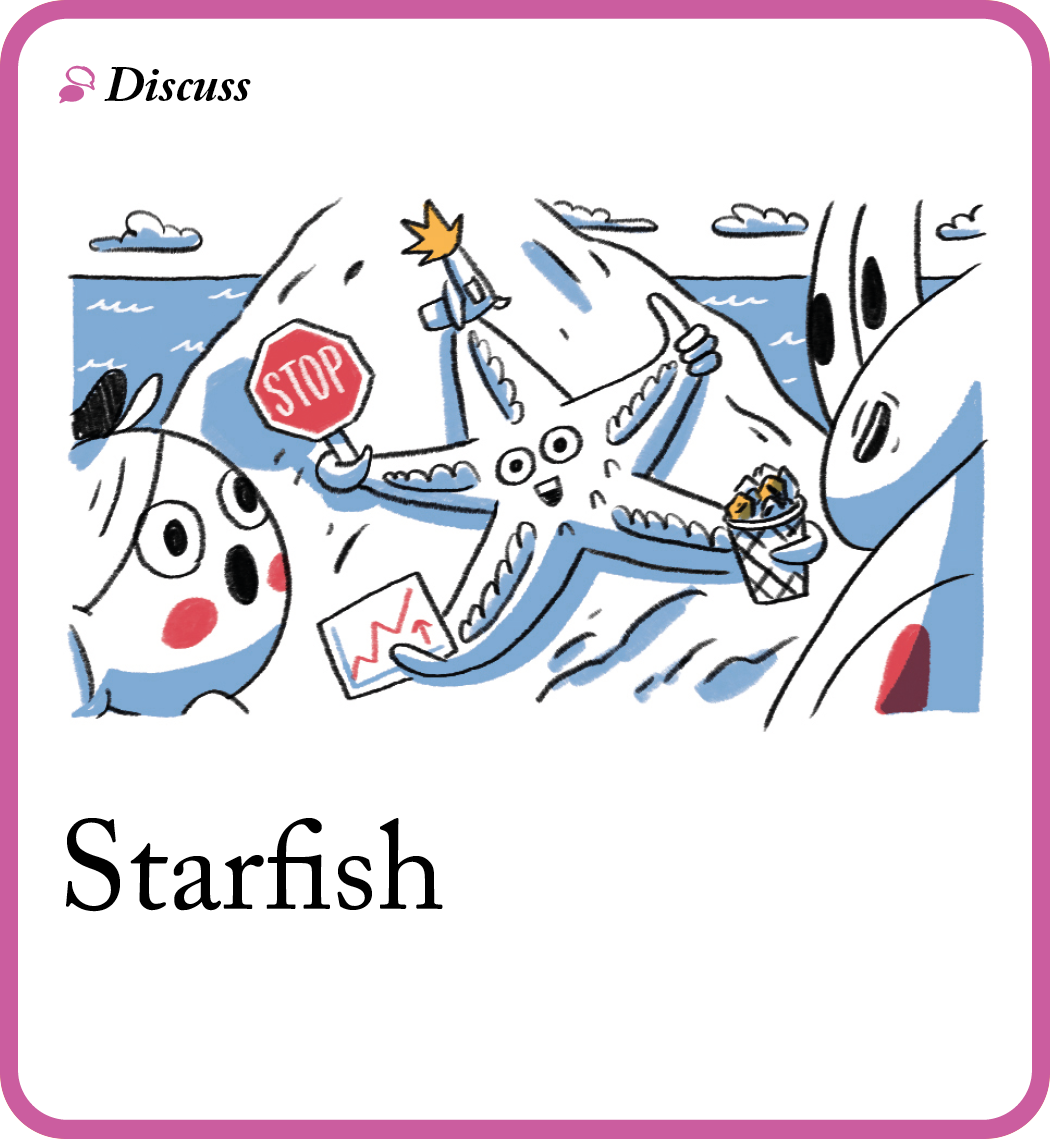
⏱️ Time: 1 hour
🧠 What’s the goal? Combine your team members’ priorities to create shared understanding and a cohesive path forward.
👀 Why is this important? Focusing on value and efficiency brings alignment, even if your team members all have different ideas about how to proceed.
💡 Tip: if people seem unsure what to write in step 2, add an example to each section of the diagram. You can prepare these in advance.
Instructions
1. Draw a five-armed star(fish) in the middle of your workspace with the headings and questions as shown:
-
Ask everyone to write down their answers to each question, one per sticky note – as many answers as they like. Each person will do this privately first.
-
In turn, invite everyone to add their answers to the workspace and share as they go.
-
As your participants are adding to each section, group the stickies by similarity to allow themes to emerge. This helps you make sense of a large amount of information, which makes it easier to prioritise. This is called a Theme Sort.
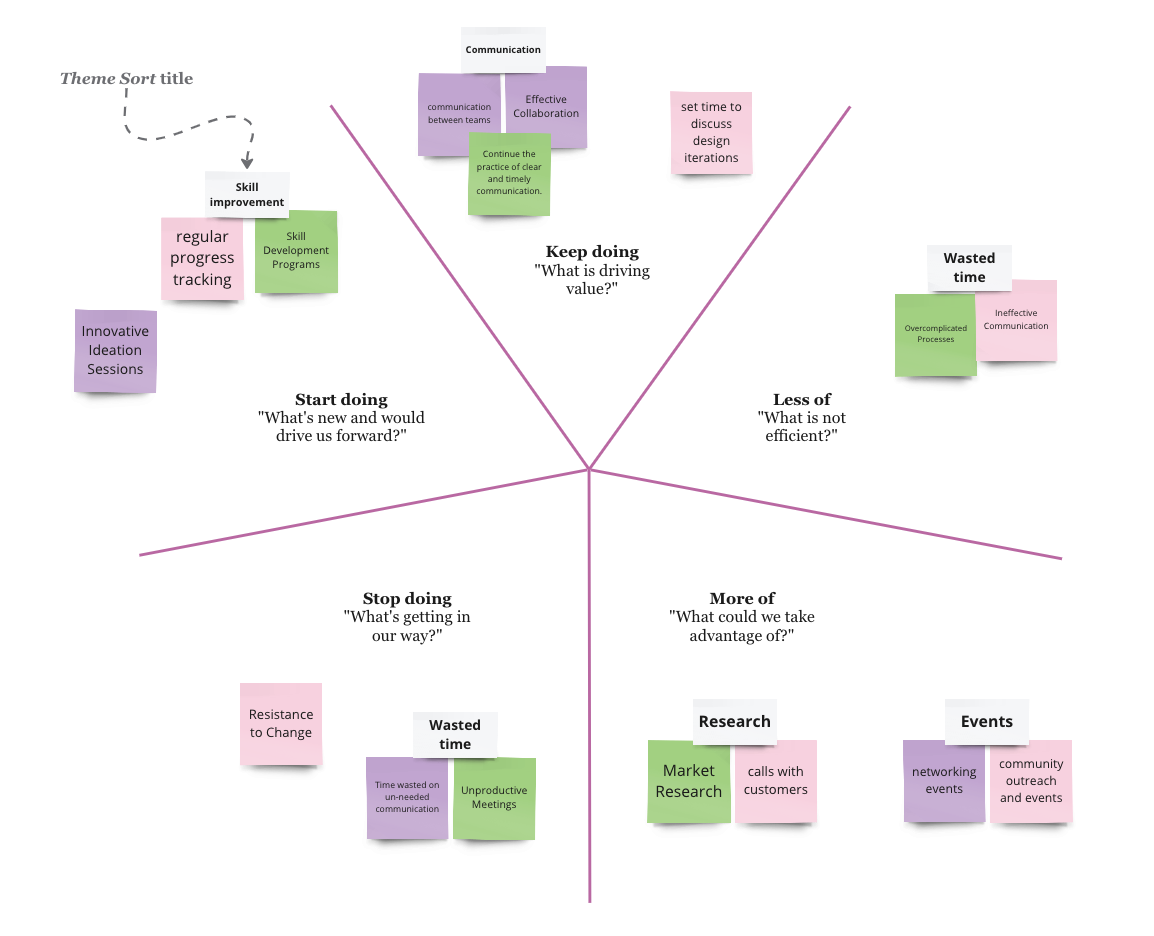
-
As a group, discuss the themes that emerge. Record any actions for the next period at the side of
your workspace.
⬇️ In the next tactic, use the list of actions you recorded and Secret Vote on them.
2
Use Secret Vote to decide what to do
Use Secret Vote to decide what to do
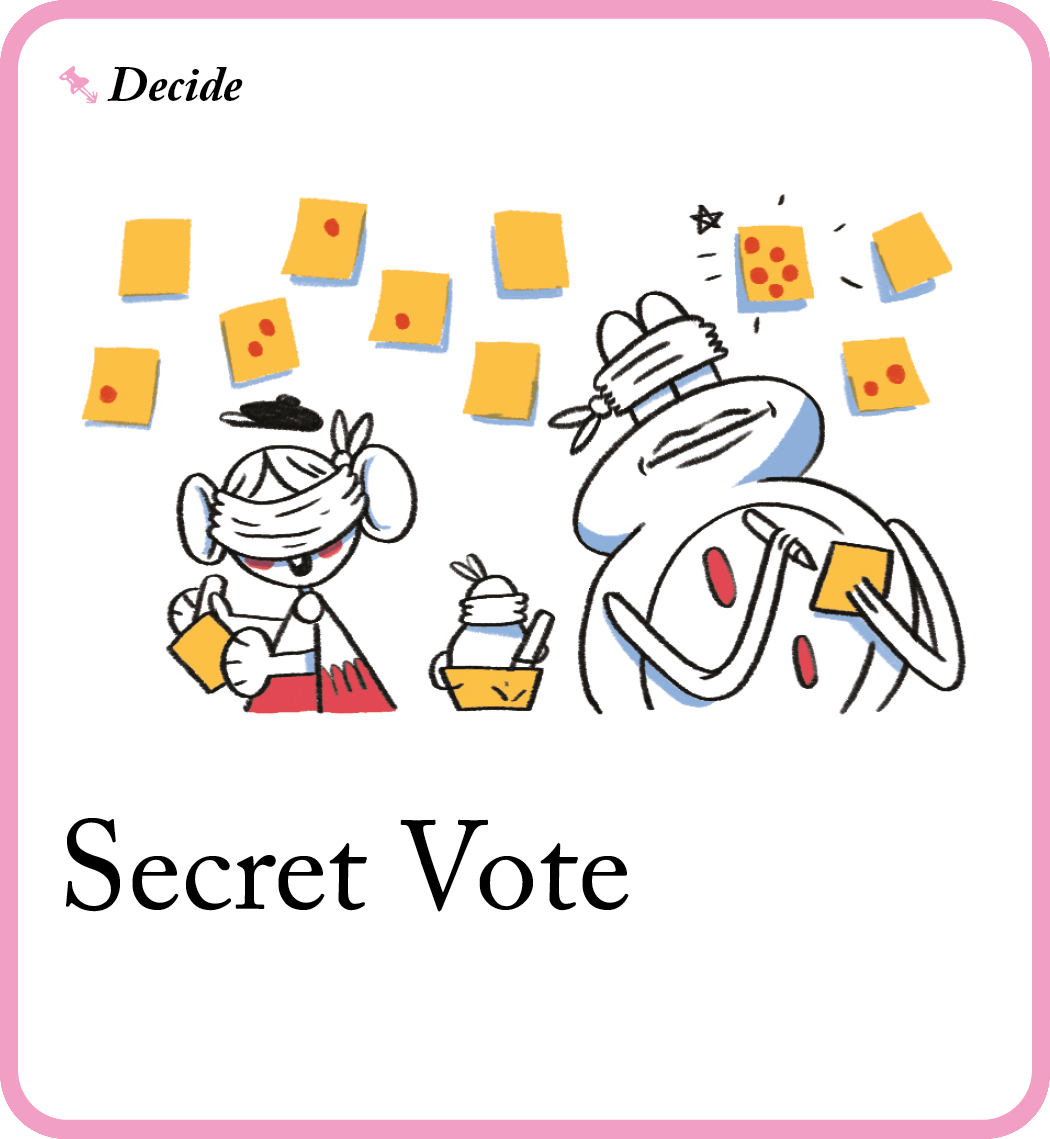
⏱️ Time: 10 minutes
🧠 What’s the goal? Democratically make decisions as a group. Eliminate all but one thing, or find the top three things.
👀 Why is this important? Help the team make decisions together, without being led by any one individual (the ‘bandwagon effect’). Secret voting neutralises any dominating personalities or opinions in the decision-making process.
💡 Tip: you might need to set a timer, for those that find it hard to make a decision.
Instructions
-
Clearly number each of the things you want the group to decide on. 1, 2, 3, 4, etc.
-
Explain each item up for vote.
-
Explain that each person has three votes each, to use in any way they like. You’re allowed to vote on your own items, or put all three votes on one thing!
-
Ask each person in the group to secretly write down the numbers of the items they are voting for on a sticky note.
-
Once voting is finished, collect and count the votes. Write the total on each item so everyone can clearly see the results.

⬇️ In the next tactic, use your top voted actions for the What section for Who, What, When.
3
Use Who, What, When to set goals and deadlines
Use Who, What, When to set goals and deadlines
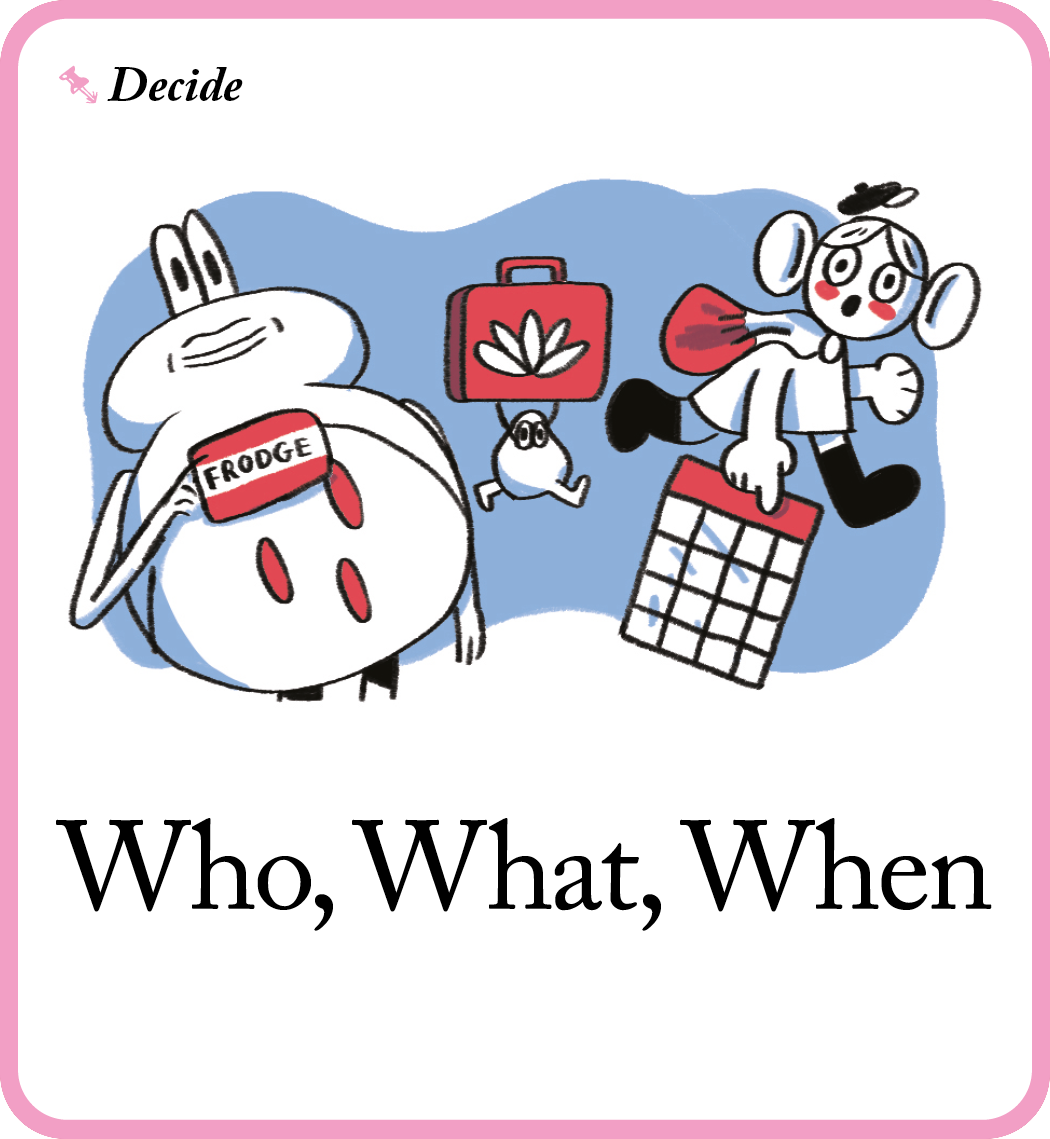
⏱️ Time: 10 minutes
🧠 What’s the goal? Leave a session with a clear plan of actions and deadlines.
👀 Why is this important? Decide who’s committing to what, and by when. Encouraging the group to define their own actions and deadlines creates accountability, which means things are more likely to get done!
💡 Tip: people are more likely to commit to actions when they are declared in front of a group.
Instructions
- Draw three columns on your workspace (e.g., a whiteboard or virtual space). From left to right, write Who, What and When at the top of the columns.
- Starting with Who, write down the participants that will be taking an action based on the top actions to take during your Secret Vote.
- Ask each participant what actual steps they can commit to. Write these under What.
-
For each row, ask that person for a time and date they will have that item done by, and write it under When. Answers like ‘Next week’ are too vague and don’t create concrete commitment.
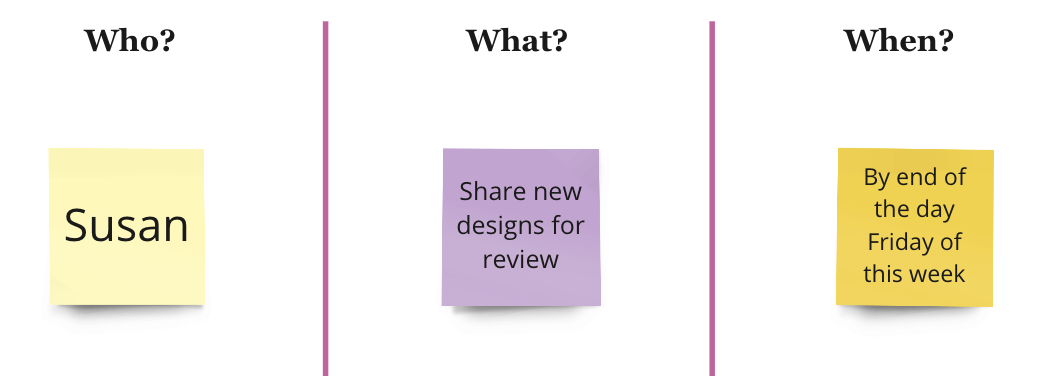
-
At this point, there might be a lot to do. Encourage those who have not contributed so far to either come up with an action, or assist another person.
⬇️ Now that you have done all three tactics, it is time to turn what you have learned into action!
What ways can I use this recipe?
- At the end of a project: run this session every time you finish a project, to make sure you learn everything you can from the work you’ve just completed.
- On a regular basis: run a retro every fortnight or month to get your team into the habit of sharing their feelings early and often.
Some tips
- Talk through the instructions. At the start of your retro, explain exactly what you’re about to do. It helps people focus on the activity, rather than wondering what’s coming up.
- Keep a close eye on the time. It’s so easy to over-run! If a big topic threatens to derail your schedule, create a follow-up meeting to focus on just that.
- Go first if people are shy. Start by adding your notes to each section if people aren’t being forthcoming with their own.
What next?
Congratulations! You have completed a round of How to use reflection to increase efficiency! You have discovered your teams perspectives and have taken this reflection to optimise your efficiency moving forward. You might want to also think about how to strengthen your established team.


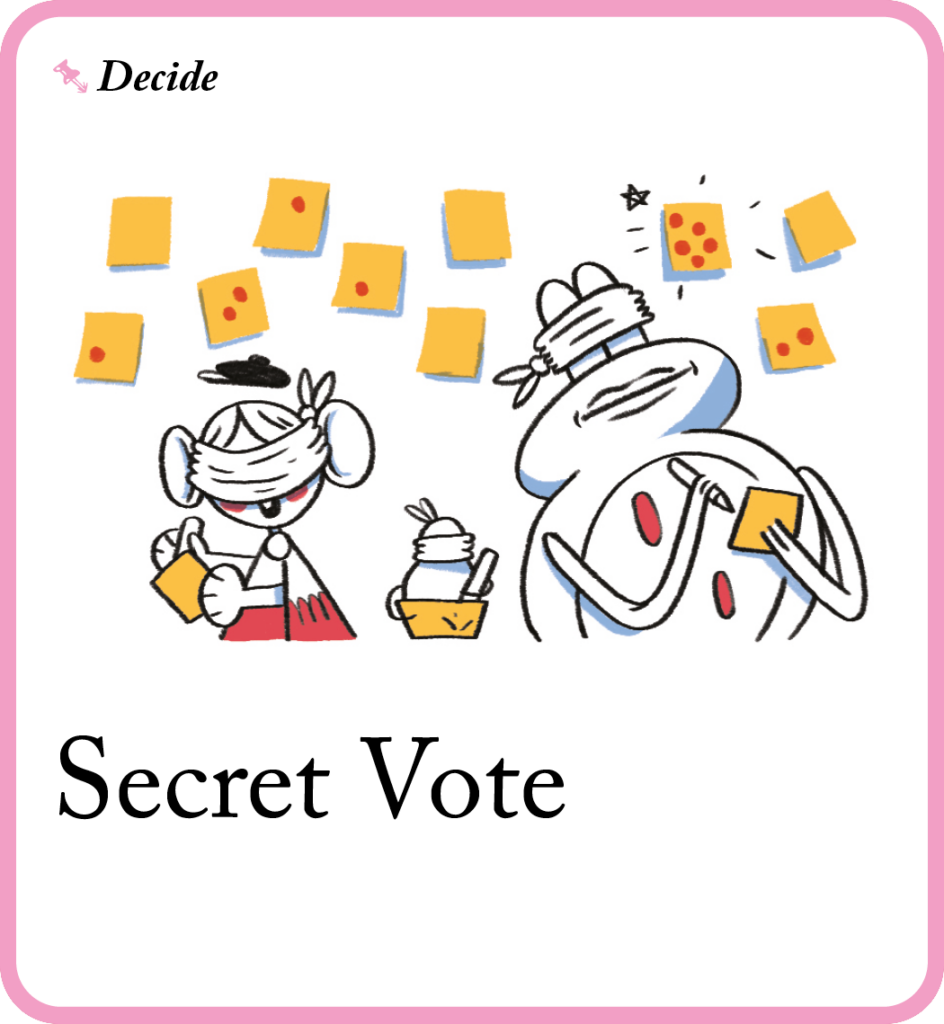
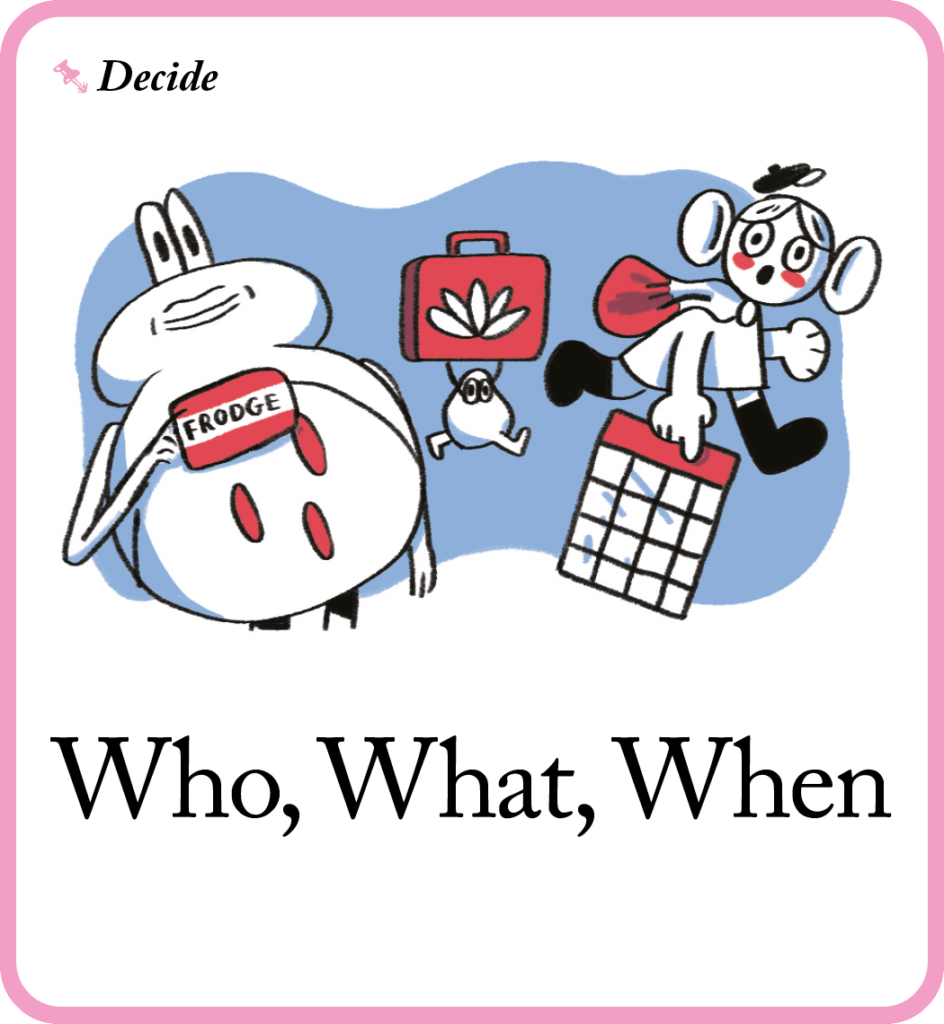
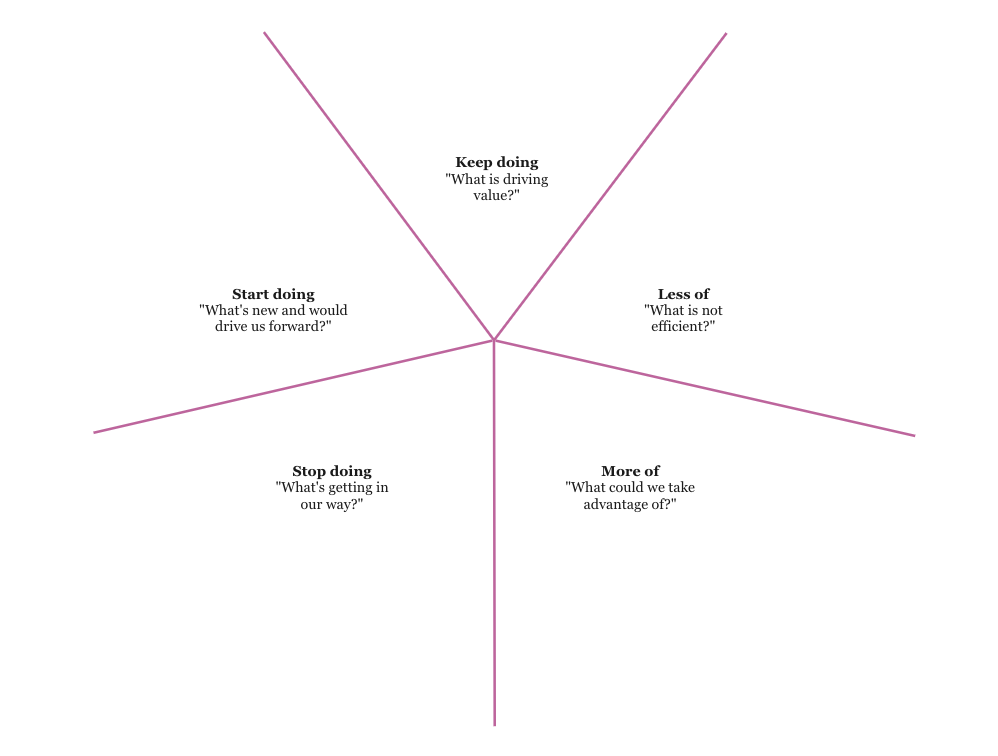
If you leave us your email, we'll let you know if we update this guide based on your feedback.